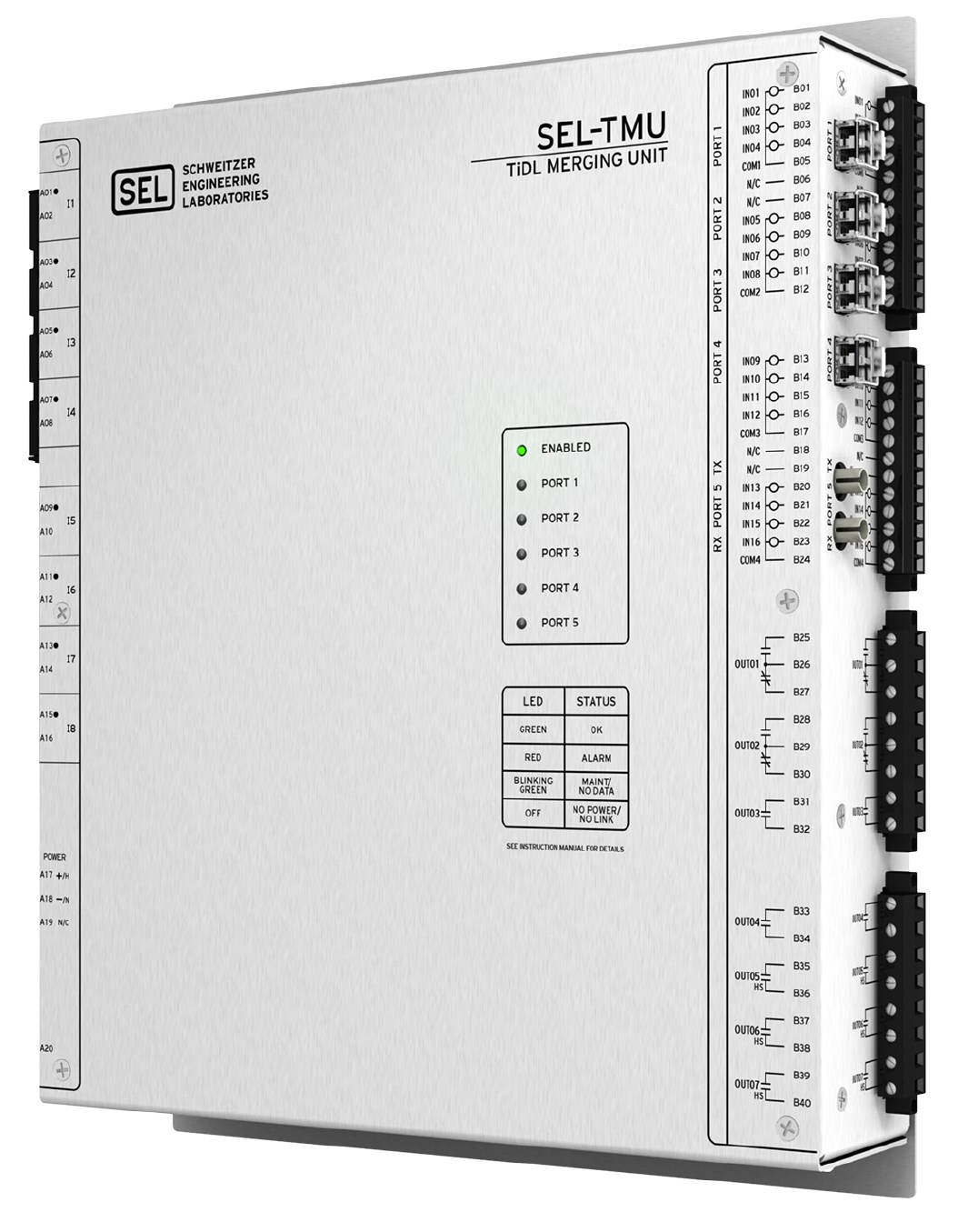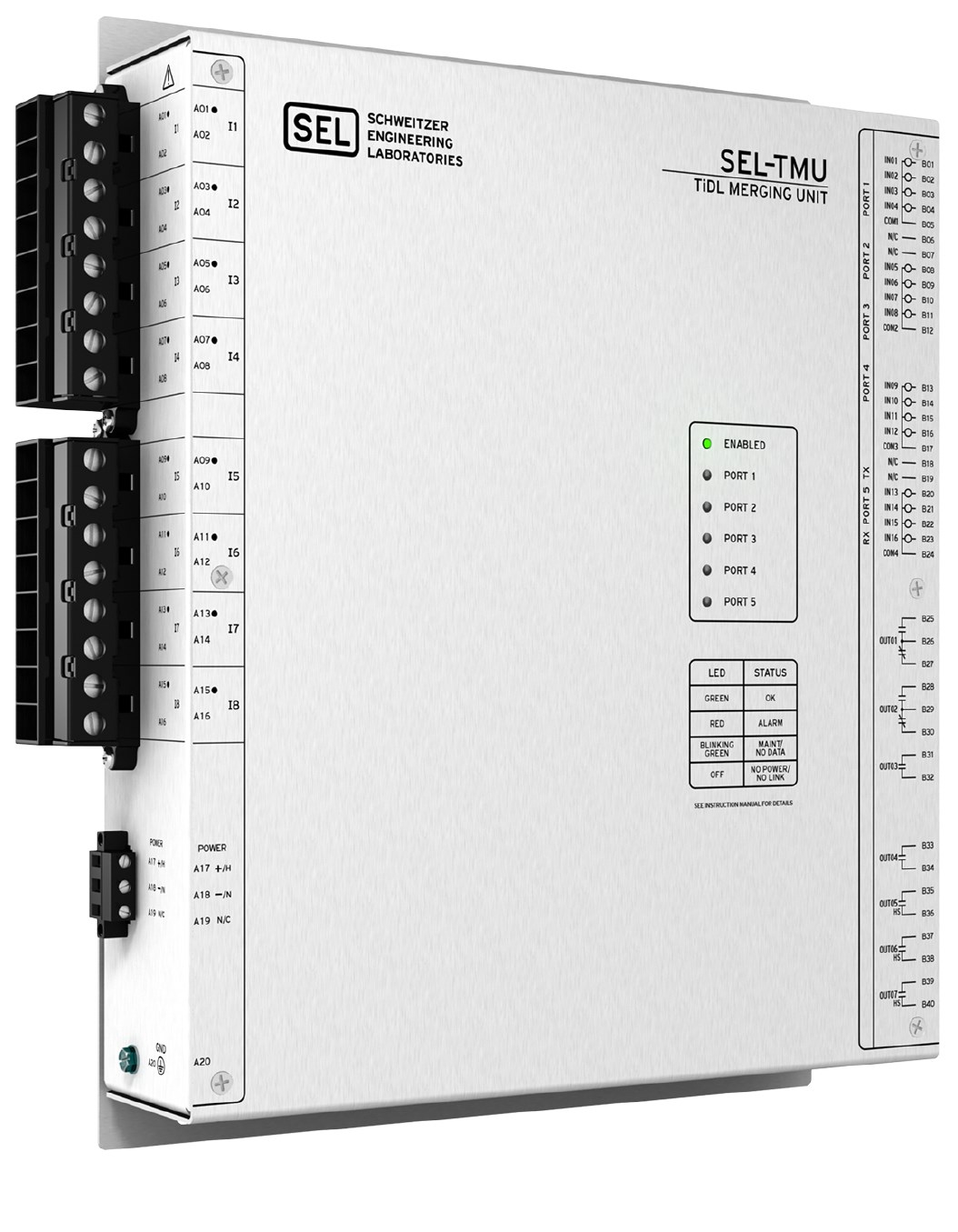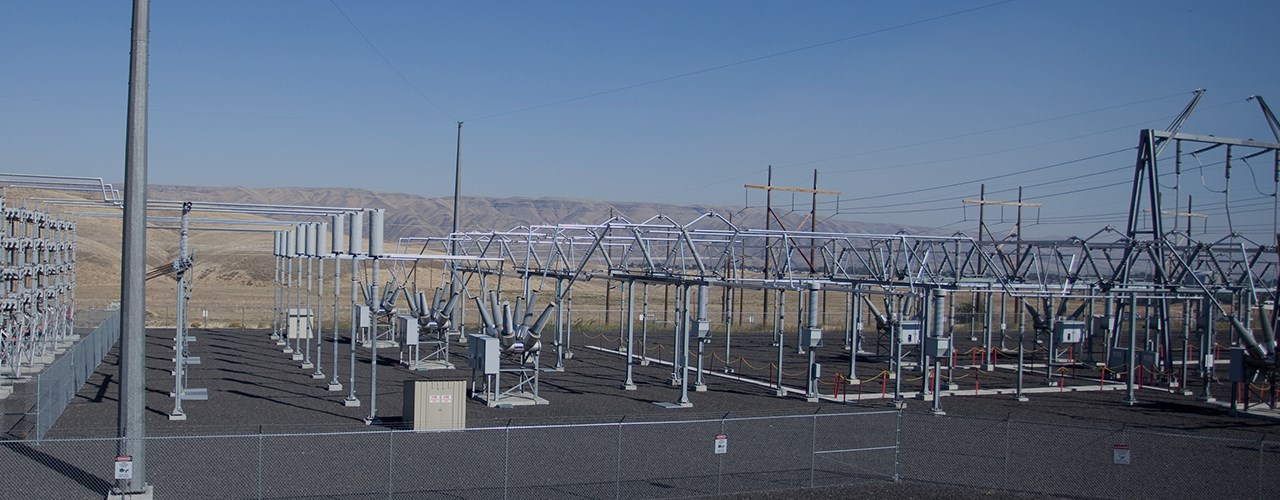
SEL-TMU
TiDL Merging Unit
The SEL-TMU is a remote data acquisition device designed for use in an SEL Time-Domain Link (TiDL) technology system. Placed in the substation yard, the SEL-TMU digitizes analog signals from primary equipment and then transmits them via fiber-optic cable to SEL TiDL relays in the control house.
Price includes an SEL-TMU and one SEL-8103-01 SFP transceiver that must be ordered separately.
Starting At
$3,710Data Digitization—The SEL-TMU digitizes discrete I/O signals and analog data, such as voltages and currents, from primary equipment and transmits the data to a TiDL relay via point-to-point fiber connections. The SEL-TMU data stream is automatically and independently synchronized to each connected relay, eliminating the need for an external time source.
Data Sharing—An SEL-TMU can communicate with as many four TiDL relays over direct fiber-optic connections without the need for a network switch. This data-sharing capability gives you flexibility on how to best design protection for your system and makes installations more economical by reducing the device count.
Simple, Purpose-Built Hardware—With no user settings and no microcontroller, the SEL-TMU is easy to deploy and manage long-term. Pluggable, self-shorting CT connections increase personnel safety by providing an additional layer of protection and make swapping connections between SEL-TMU devices quick and easy.
Robust Self-Monitoring—The SEL-TMU provides robust self-monitoring to detect an out-of-tolerance condition within the device. If an out-of-tolerance condition occurs, the SEL-TMU takes appropriate action, such as disabling outputs on a detected failure to avoid spuriously tripping a breaker, and then alerts the connected TiDL relays.
Features
-
- 1
The LED interface indicates the status of each port and the overall hardware health.
- 2
Small form-factor pluggable (SFP) fiber ports allow the SEL-TMU to communicate with up to four TiDL relays. SFP transceivers must be ordered separately.
- 3
The 16 universal contact inputs operate over a range of 24–250 Vdc.
- 4
7 flexible contact outputs support tripping, signaling, or switching applications.
1234
-
-
- 1
Choose a model with 8 current inputs or with 4 current inputs and 4 voltage inputs.
- 2
The power supply operates over a wide range: 48–250 Vdc/100–240 Vrms.
12
-
Details
TiDL Technology
A TiDL technology solution is simple, requires zero network engineering, and does not need high-accuracy clocks for critical protection functions. It uses a point-to-point fiber architecture to transmit data from SEL-TMU devices in the yard to SEL TiDL relays in the control house. These enhanced TiDL relays can be paired with the SEL-TMU:
- SEL-421 Protection, Automation, and Control System
- SEL-451 Protection, Automation, and Bay Control System
- SEL-487B Bus Differential and Breaker Failure Relay
- SEL-487E Transformer Protection Relay
- SEL-411L Advanced Line Differential Protection, Automation, and Control System
Increased Security
The SEL-TMU communicates directly with the SEL TiDL relays by using a nonroutable protocol and does not offer interactive remote user access. These features increase security, reduce complexity, and reduce the associated compliance costs in a distributed remote data acquisition system.
Rapid Commissioning
Network configuration and commissioning is performed by the connected SEL TiDL relays. Use SEL Grid Configurator Software to configure and commission custom TiDL topologies to fit each application. The software maps SEL-TMU I/O to the local I/O of the TiDL relay and verifies all connections and hardware. To make the mapping configuration more intuitive, enter custom names (e.g., the physical location of the unit or company nomenclature) for each SEL-TMU I/O quantity.

- Remote data acquisition device for SEL TiDL systems
- Four configurable 1 A/5 A CT inputs
- Four 57.7–250 V phase-to-neutral wye configuration PT inputs

- Remote data acquisition device for SEL TiDL systems
- Eight configurable 1 A/5 A CT inputs
The Firmware IDs for older versions of the firmware can typically be found in Appendix A of the instruction manual.



.png?n=63901430435000)
